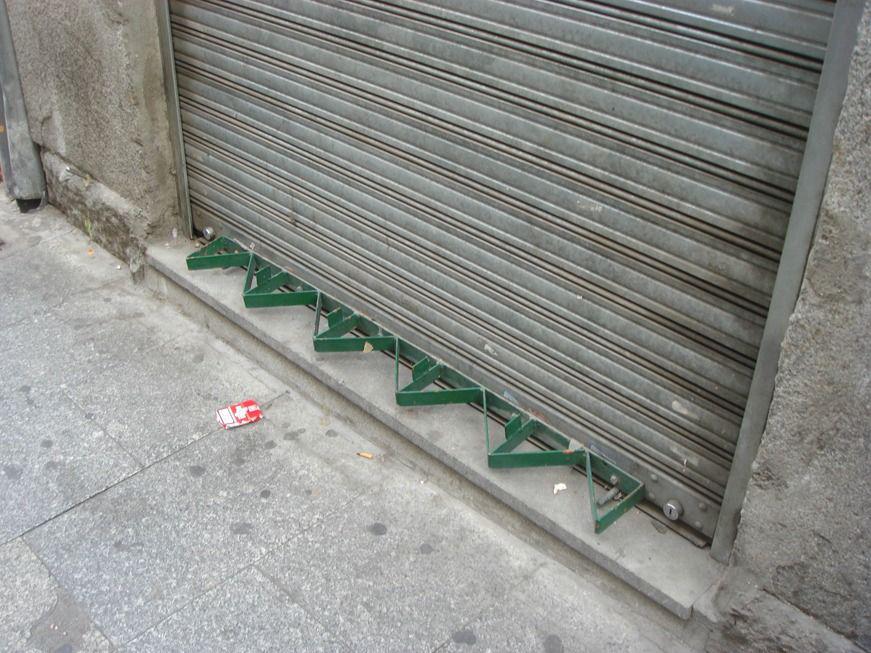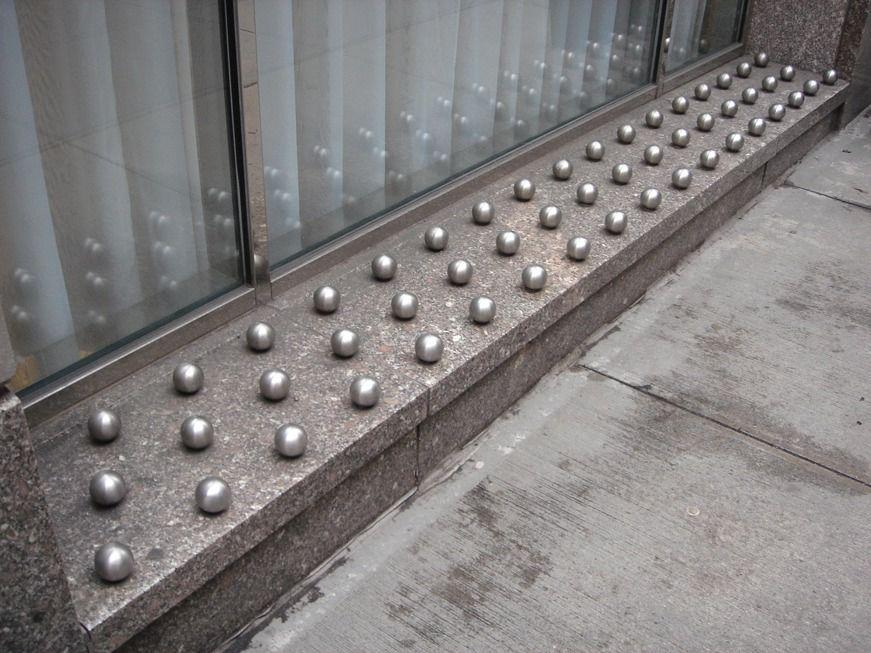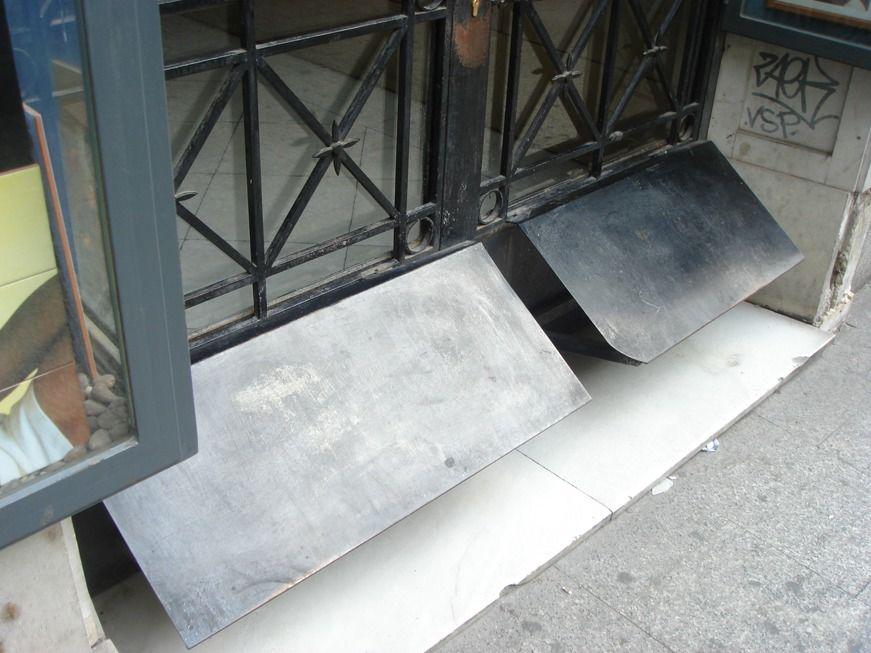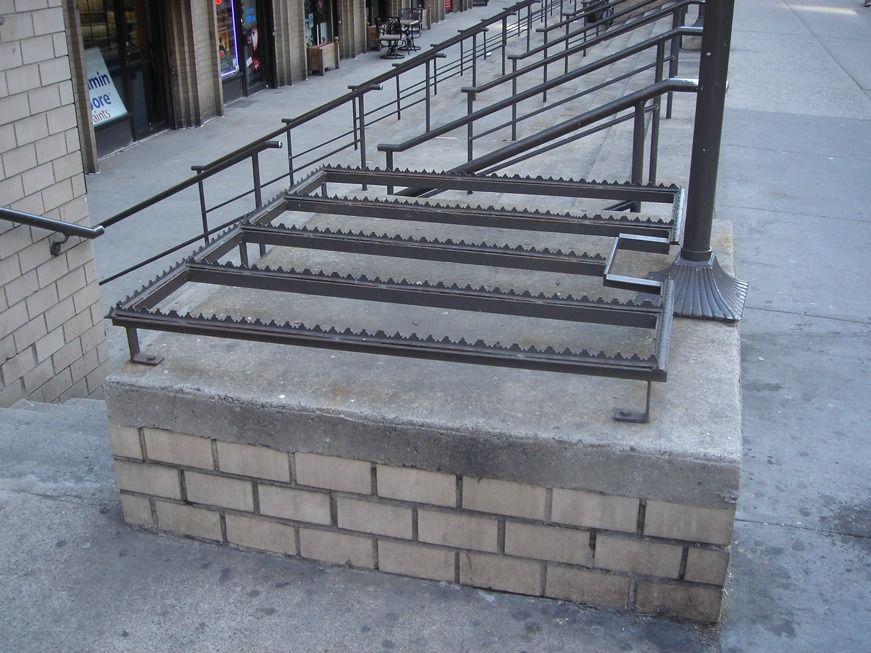Over the weekend, a photo of forbidding anti-homeless person spikes installed recently to prevent unwanted sleeping on the street outside a luxury housing unit in London (above) went viral on social media. The ensuing outrage has sparked an online petition to remove them that already has more than 100,000 signatures and the story has since been widely picked up by the BBC and other news outlets. London Mayor Boris Johnson declared the studs “ugly, self-defeating and stupid,” adding that the developer of the building “should take them down.”
But inelegant and heartless as they may be, sidewalk spikes and other deterrents are nothing new and unlikely to disappear altogether, momentary collective crisis of conscience notwithstanding.
Artist Nils Norman has been photographing what he calls “defensive architecture” since the late ‘90s and maintains an ongoing archive of images documenting the phenomenon. His 2001 book The Contemporary Picturesque features photos of surface spikes and studs and other urban design afterthoughts that punctuate cities around the world, underlining the persistent tension about what constitutes public space and private property.

Courtesy of Nils Norman, the Urbanomics Archive
Norman says that what he calls “unruly parcels of pavement,” or “spaces left over after planning,” are often referred to as “gap sites” or “leaking spaces.” They are “too small to develop, but large enough to encourage loitering or homeless camps,” he says, and often redesigned as “enclosed micro-parks that are cultivated with low-maintenance hardy shrubs to re-establish control over unfixed difficult spaces. Bum-free studs and anti-loitering devices proliferate on banks and in larger public gathering spaces.”

Courtesy of Nils Norman, the Urbanomics Archive
Here, Norman shares photographs of a few examples of “bum-free” defensive architecture and design elements in London, New York City, Madrid, and elsewhere, designed to keep loiterers of all stripes from planting themselves where somebody doesn’t want them. The whole bum-free archive and more examples of defensive architecture can be seen on his website.

Courtesy of Nils Norman, the Urbanomics Archive

Large metal panels attached to a door are designed to prevent prostitutes from loitering in Madrid.
Courtesy of Nils Norman, the Urbanomics Archive

Courtesy of Nils Norman, the Urbanomics Archive

Courtesy of Nils Norman, the Urbanomics Archive

Courtesy of Nils Norman, the Urbanomics Archive
